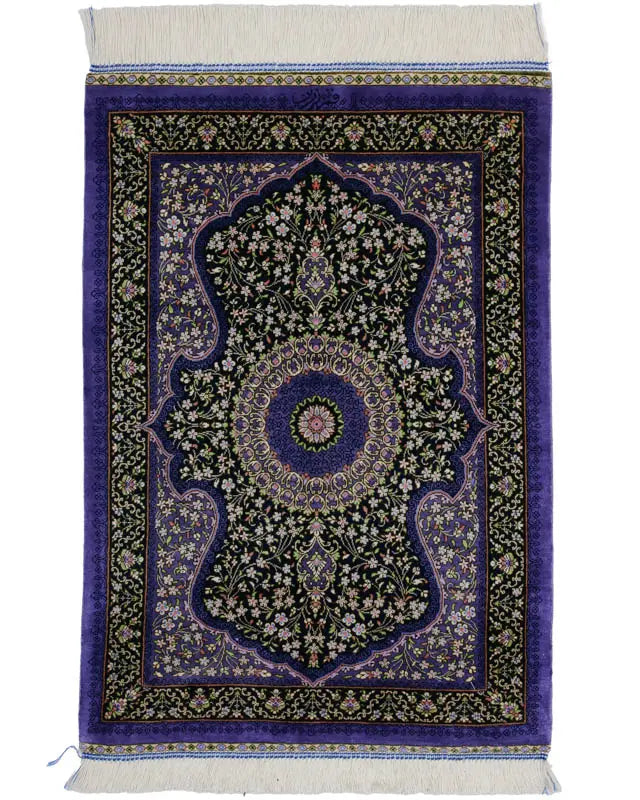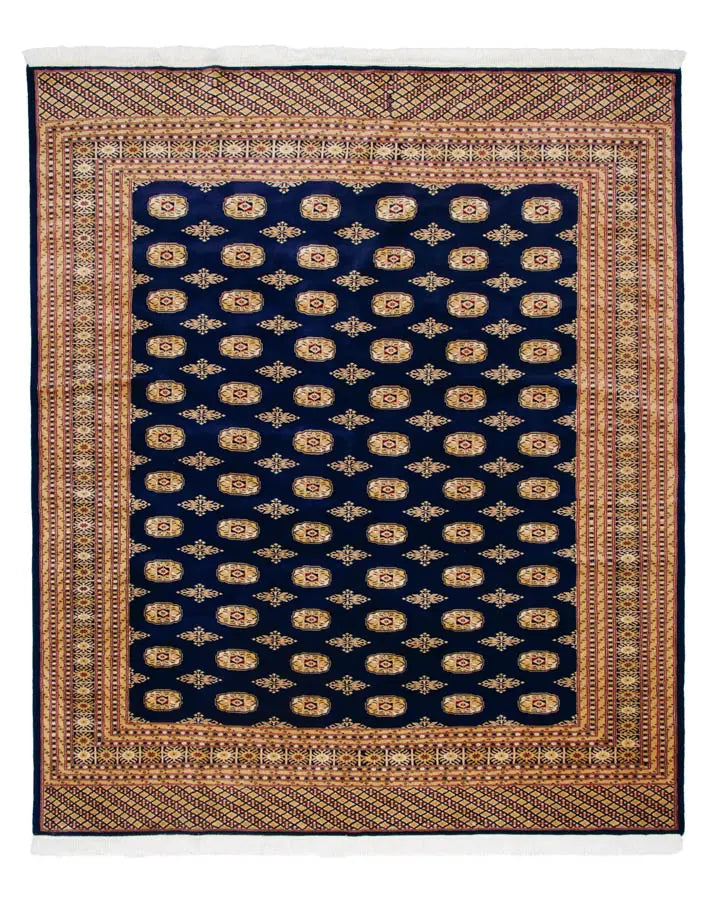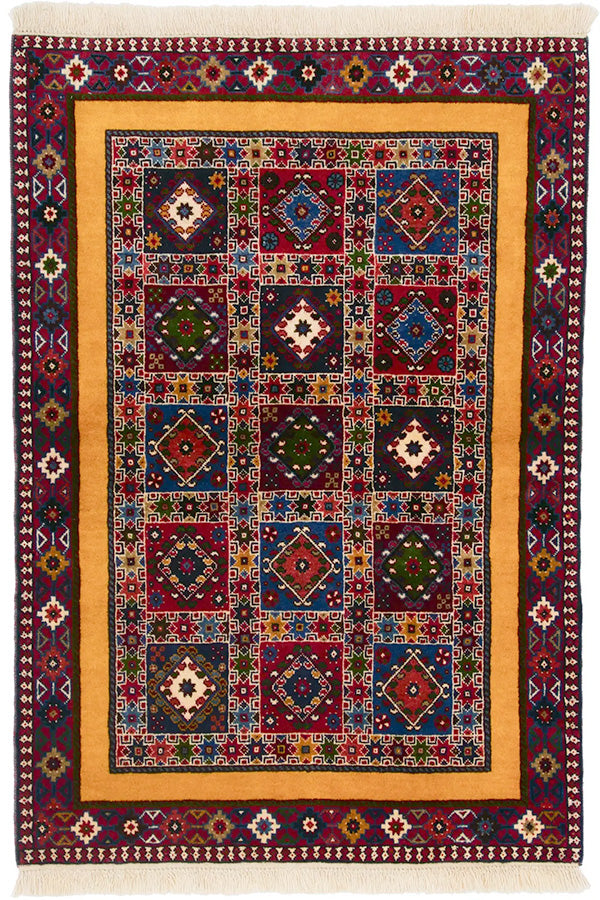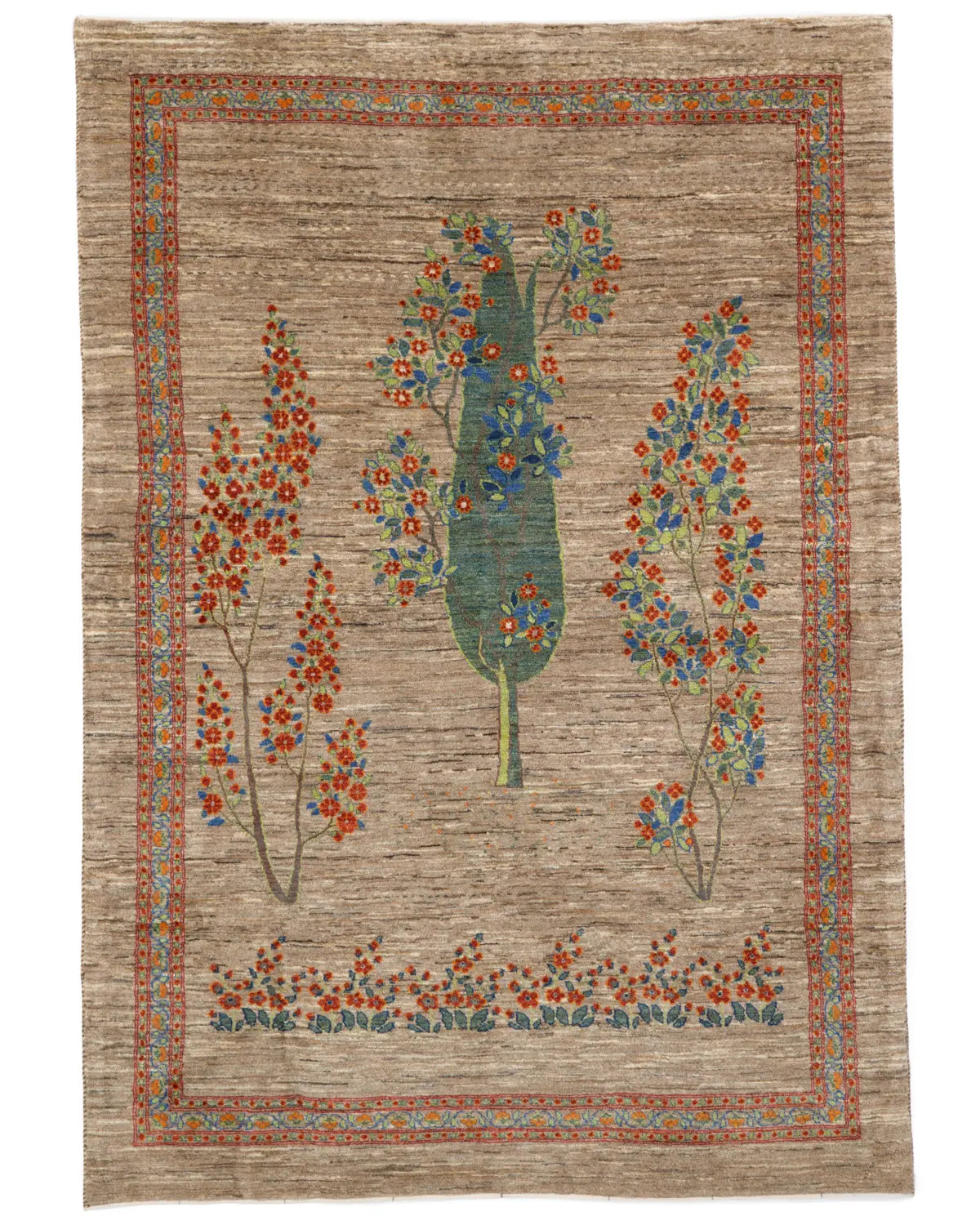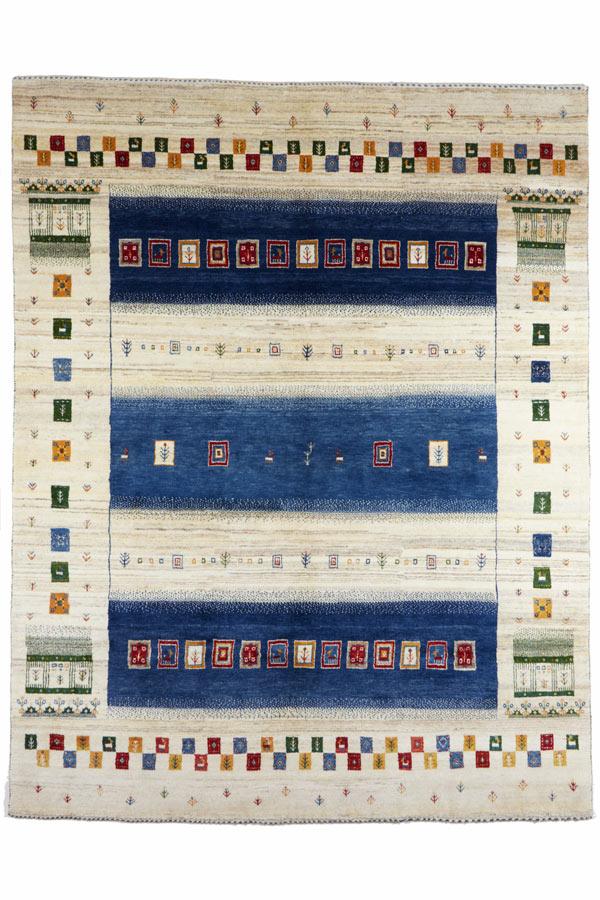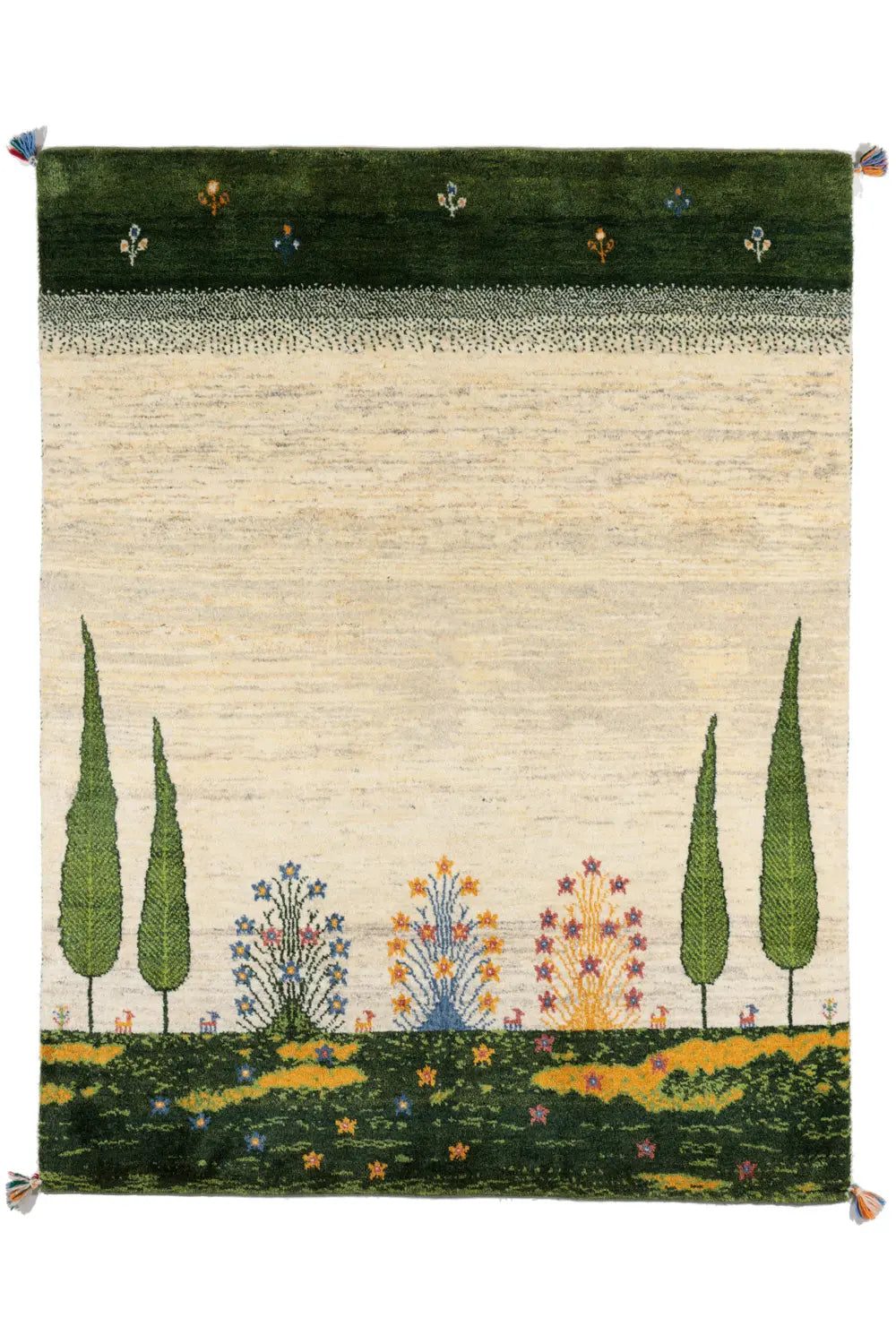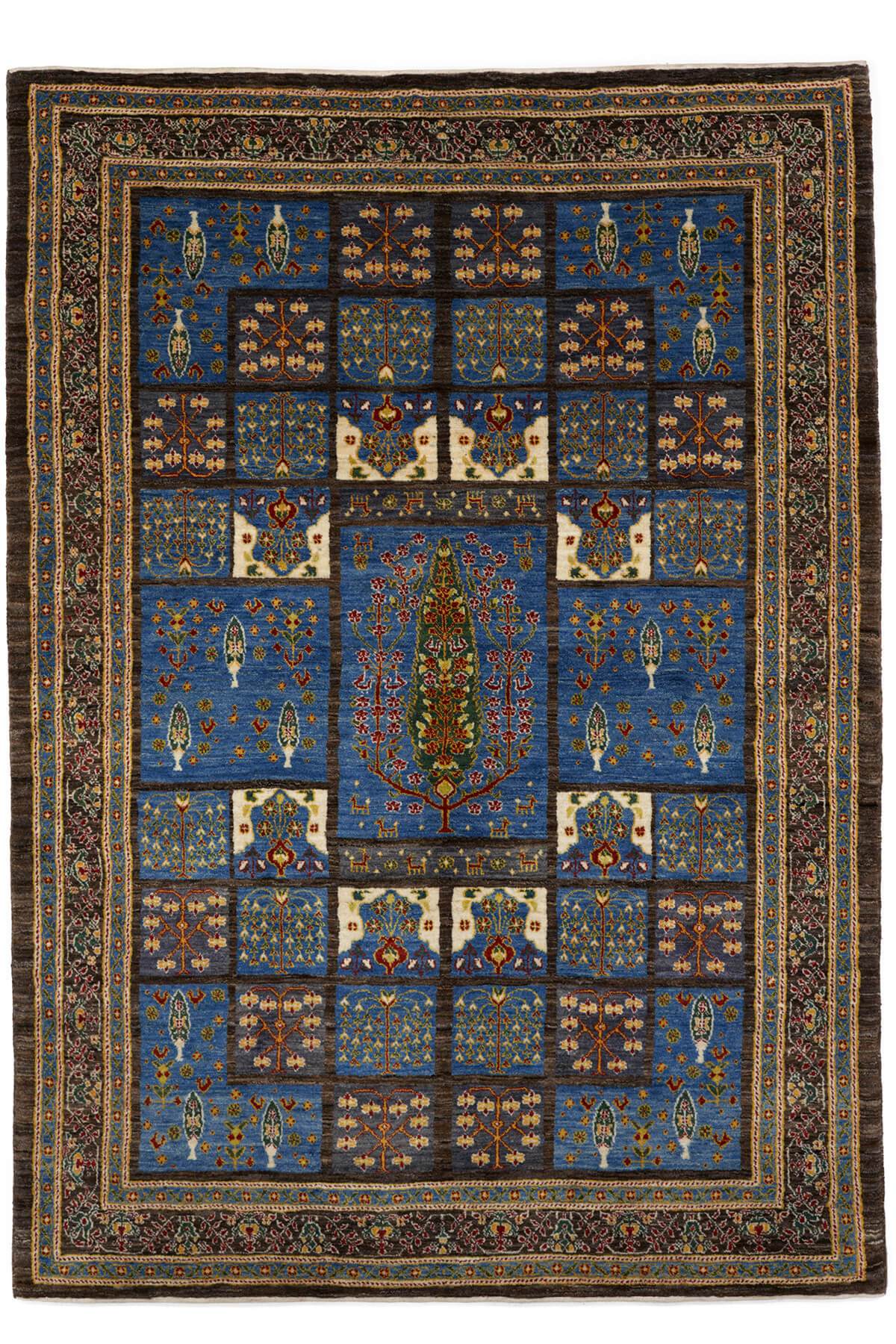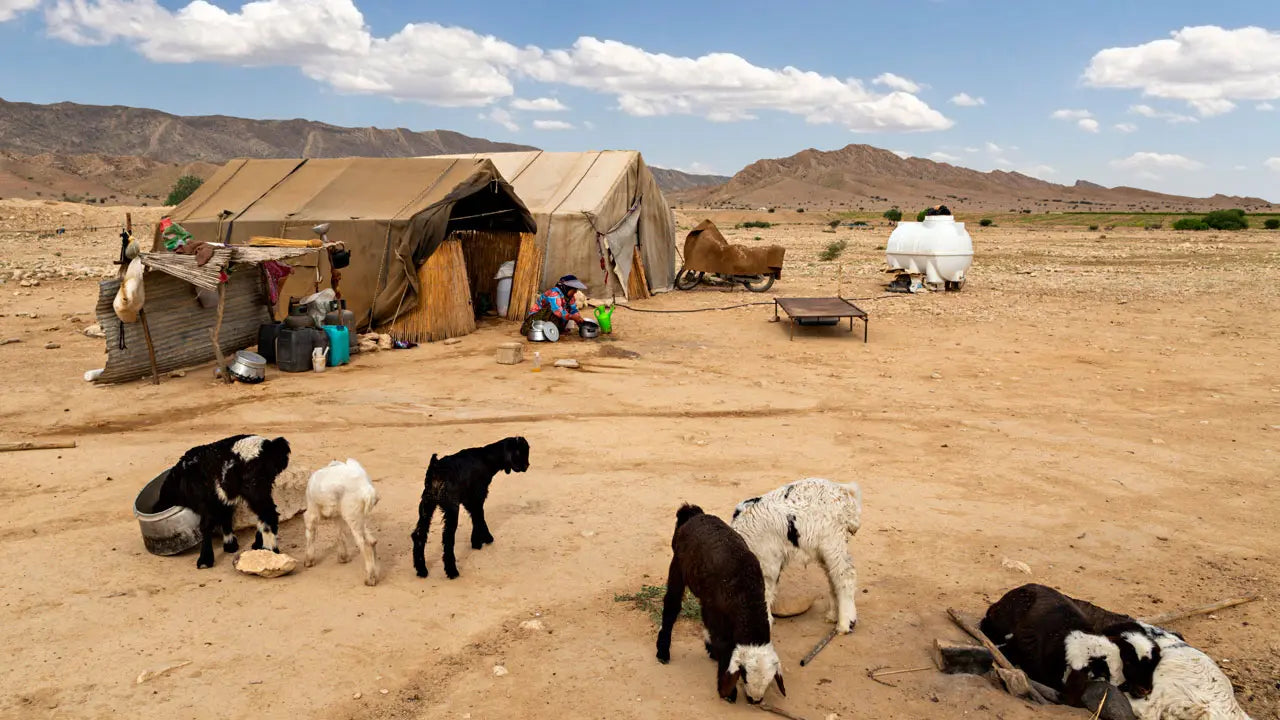
Gabbeh
Type: Persian carpet
Location: Southwest Iran (formerly Persia)
Knot Density: 70,000 - 150,000 knots per square meter
Features: Thick. Animal and plant motifs.
Pile: Long
Gabbeh rugs are handmade by Qashqai nomads living in Fars Province in southwestern Iran, and they are among the most well-known types of handwoven rugs in the country. The name “Gabbeh” comes from the Persian word meaning “raw” or “natural.” These rugs are characterized by their simple designs with minimal ornamentation, often featuring motifs inspired by the daily lives of nomads—such as animals and plants.
The rugs are made from hand-spun sheep’s wool and dyed using natural dyes derived from plants and minerals. Gabbeh rugs are notably thick—much thicker than typical Persian rugs—and can reach up to 2.5 cm in pile height. In recent years, more colorful and intricately patterned Gabbeh rugs have also become popular.
Gabbeh rugs are categorized by knot density and pile height into various types, such as Basic, Amaleh Baft, Kashkuli, and Luribaft. Among these, Kashkuli rugs are known for their high knot density and shorter pile, offering a finer and more detailed weave.
